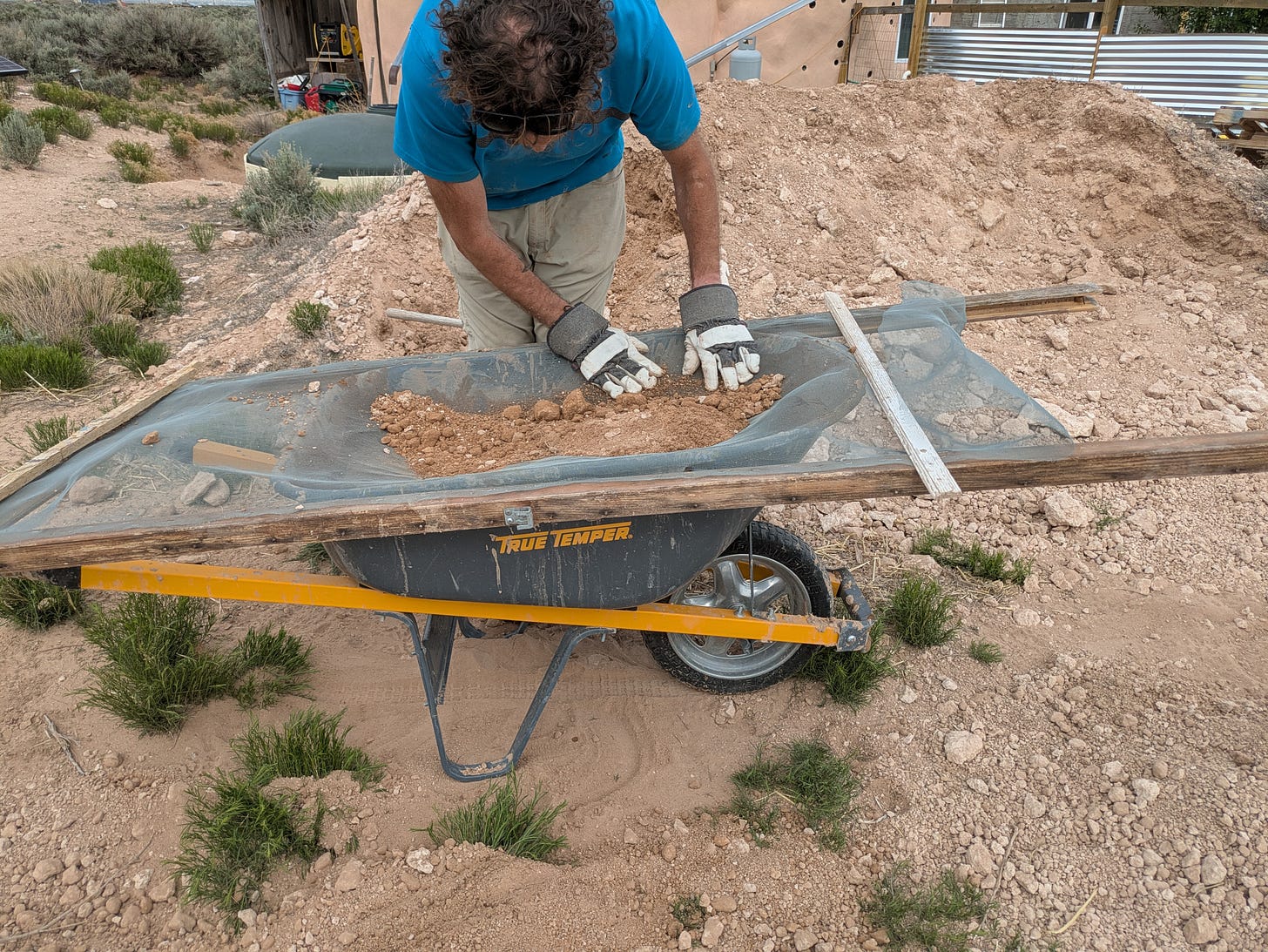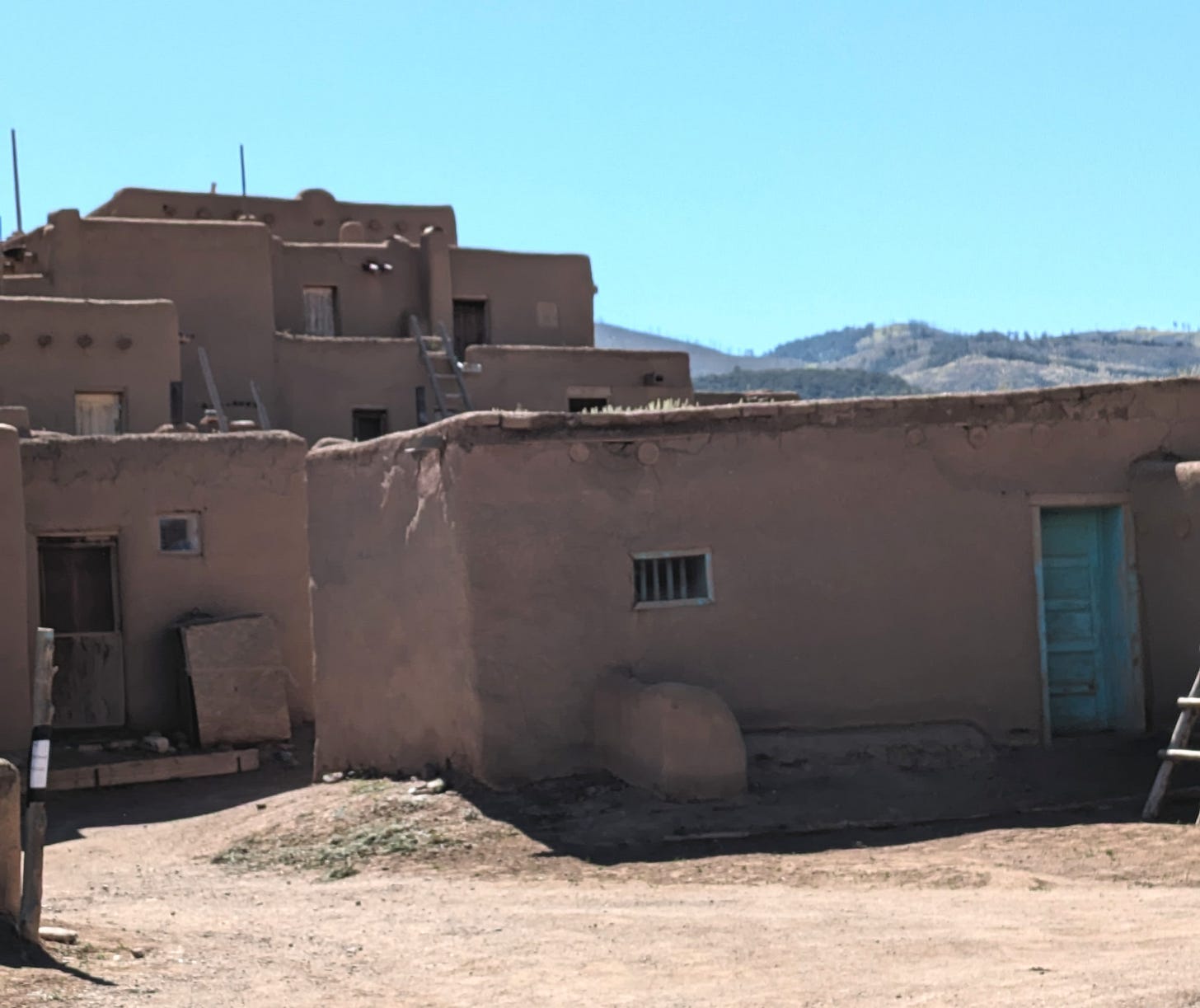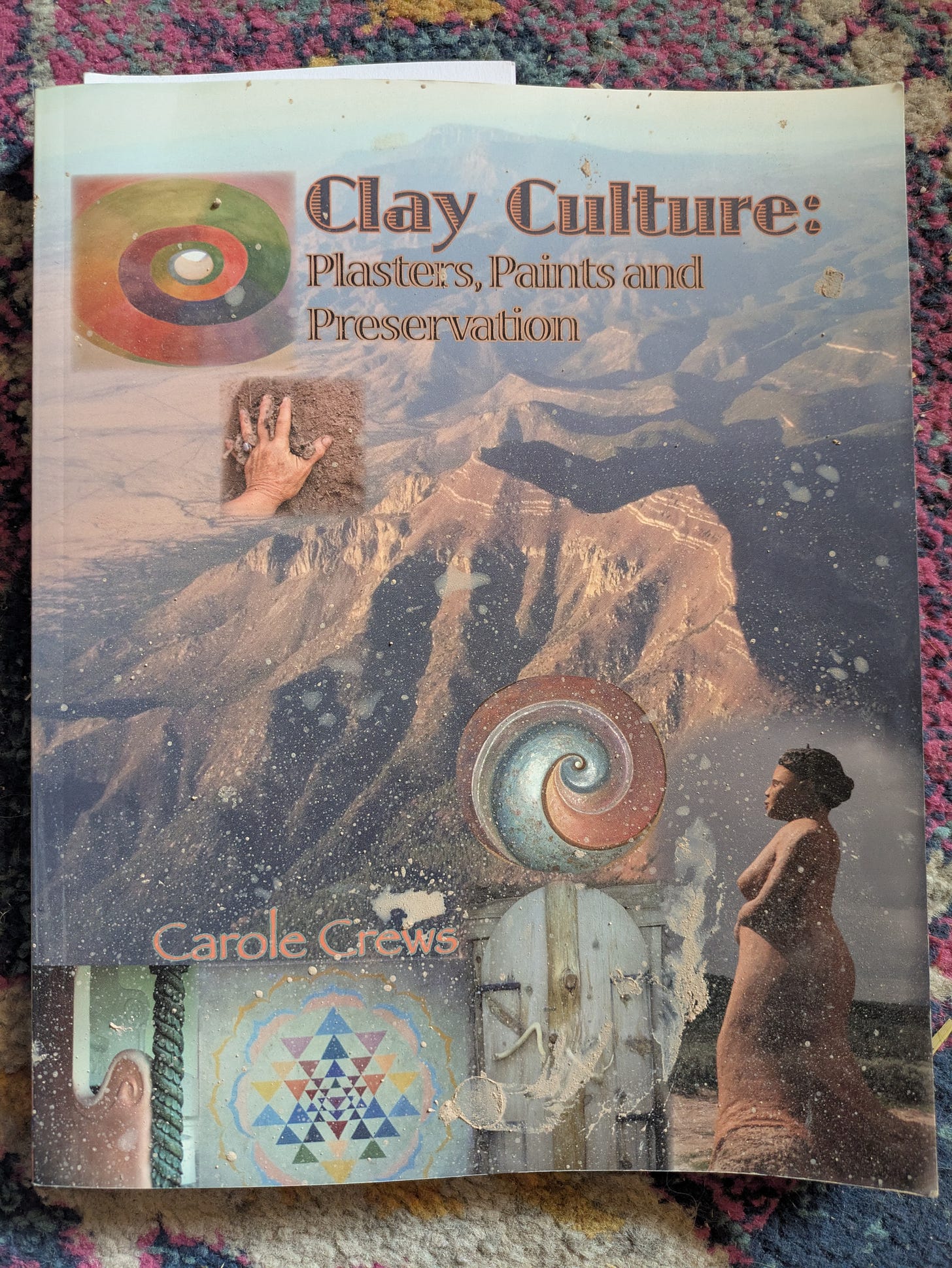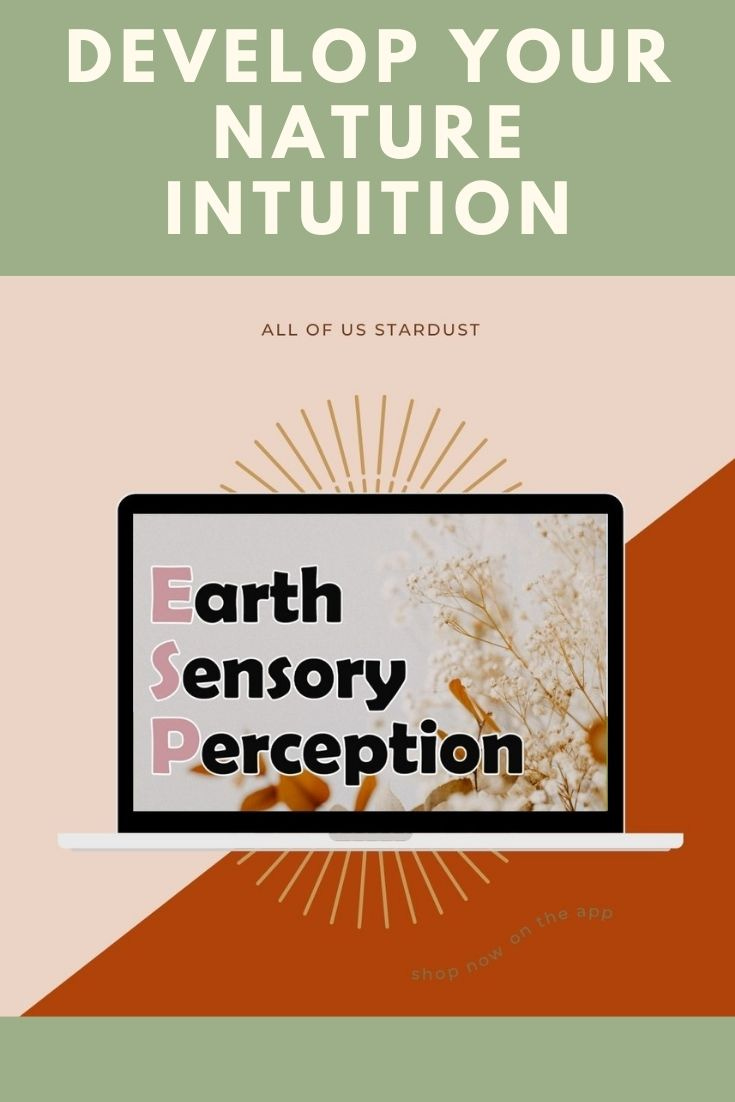Why I Live in a Mud Home
How Natural Materials Animate Sustainable Houses with Spirit
The Latin word humus means soil, earth, dirt, ground and it shares its root with the word human, as in earthling of the earth. I thought about this frequently as I spent the last few weekends digging up the dirt in my yard, adding water and straw, and plastering the walls of my house with it.
I was awed each day by the simplicity of building a home with mud and straw that could shelter my family and at little to no cost. As I molded the walls with dirt, I considered how my own body is made of mud, a miraculously highly functional being made of mud. Human bones are primarily composed of minerals, particularly calcium and phosphate, which are also key elements found in the Earth's crust, ingredients created within stars billions of years ago.
Slow and Intentional Building
Nowadays when anyone asks me, “What’s going on with you?” I reply, “Mudding.” My yoga teacher was intrigued. “Where I grew up in Texas,” she said, “houses go up in a day. I love the way people in New Mexico build, slow and intentional.”
Slow and intentional. That’s a great way to describe the work Eric and I have been doing on the greenhouse extension. We are a year in now, after digging the foundation by hand, leveling each cement block, stacking bales of hay, stuccoing the exterior in time for winter, all the multiple little steps in between and beginning the slow and intentional work of mudding the interior.
Adobe Building
The longest inhabited building in North America is here in Taos. The Taos Pueblo, a UNESCO World Heritage Site featuring multi-story earthen-walled buildings has been standing strong for over 1,000 years. When the Spanish arrived and settled in the area, they adapted the Pueblo style of building and called it adobe, rooted in the Egyptian word for mud brick. Adobe construction involves sun-dried bricks made from clay, sand, straw, and water.
The act of clay plastering is deeply rooted in New Mexican culture. Traditionally women are the plasterers. Today many colonial adobe churches hold annual plastering events where the community comes out to share in the work of replastering the exterior walls, which tend to degrade due to hot sun and hard rain.
Many buildings in New Mexico are fake adobe, like the Wal-Mart and McDonalds, plastered in concrete to meet the aesthetics. I tell tourists if you want to know if it’s real or not, look for the straw. Some believe that when the Spanish arrived in New Mexico they thought they had found the famous City of Gold because of the way the straw reflected in the sunlight.
Living Homes
Carole Crews, my friend and neighbor, gets deep into the history of building with clay in New Mexico in her book Clay Culture: Plasters, Paints and Preservation. She calls the traditional way of building with earth, “the soft path.” She says,
“We can mold a more sustainable future in a ‘Small is Beautiful,’ inspired way if we take matters (mater, mother) into our own hands and just do it. Life need not be about compromising our ideals to survive in a system based on militarism and exploitation that adds to global warming and far too much human misery. A marriage of old and new ways can help create the kind of future we’d most like to imagine, and that, my friends, is the key.”
As I add on thick coats of sculpting clay layers to round out the corners and smooth them with my palms, I feel as if this slow and intentional and soft path is breathing life into my home. My home feels alive and animated in a way a spec house that went up in one day just doesn’t. We put our heart and breath into resurrecting each wall and so our home is alive like our bodies are alive, enspirited.
The Myth of Cura
Multiple ancient and indigenous religions and mythologies tell tales of humans created from earth and clay.
"We created man from sounding clay, from mud molded into shape..." - the Qur'an
"Then the Lord God formed man from the dust of the ground and breathed into his nostrils the breath of life, and the man became a living being." - Genesis 2:7
One of my favorite examples is the Roman myth of Cura. Do you know this one?
One day, the Roman goddess Cura, who is the beautiful personification of caring and compassion, stopped along the riverbed engrossed in thought and began playing with the clay soil. Much like one does when they are in the zone or zoned out, she was not conscious of her creation, but when she looked down, she saw that she had molded a figure. She stared at the form, contemplating its limbs and head, curious about her artistry when Jupiter, the god of the sky and thunder, appeared beside her. By now enthralled with her creation, she asked Jupiter to grant her form spiritus, which means both breath as well as spirit. “Please,” she requested under fluttered lashes, “will you breathe life into it?”
Jupiter could not resist and quickly granted her wish. The figure soon inhaled deeply, animated, and stretched its limbs. Cura clapped with excitement. We shall name it Cura, after me, since I formed it into life. Jupiter thought this was going too far. “No,” he said, “We shall name it Jupiter after me, for I gave it breath.”
This led Cura and Jupiter into a fierce debate over who should lay claim over this new creation. While the two were arguing, Earth arose and demanded that the creature have her name because it was made from her body. The three divine beings squabbled by the riverside. Until finally, Saturn, the god of abundance and peace, arrived to settle the dispute.
Since the being was created by Cura, she should have domain over it as long as it lives. Since the spiritus was granted by Jupiter, he shall have the being after death when it exhales its last breath. But the name would belong to Earth of whom its body was made of, and the creature would be named human after humus, of the earth.
I love this story so much because it speaks to the truth of our existence. We live our lives from our hearts, with care and compassion. We breathe our first breath at birth and our last breath at death and all the while we are filled with spirit. But our bodies are made of the earth. We are living, breathing, loving clay. And so is my home.





